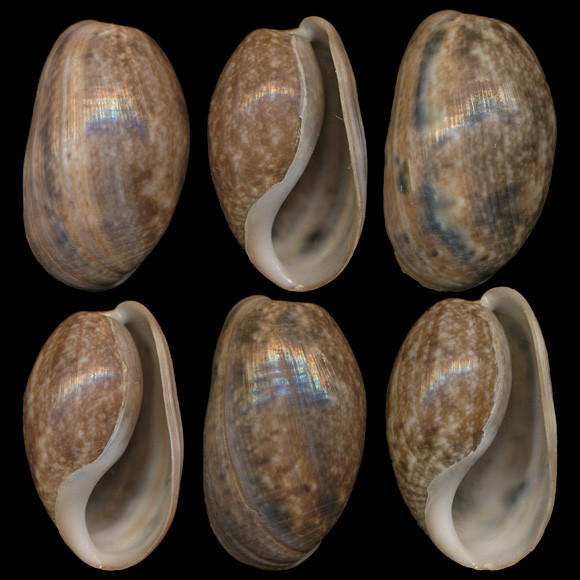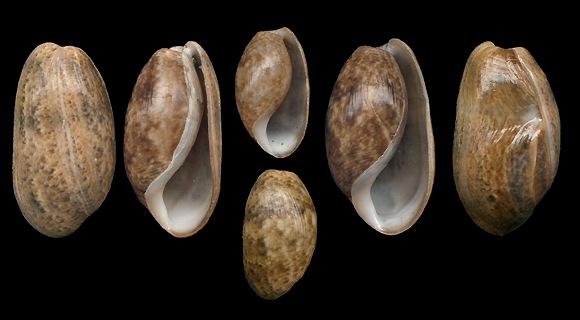
Azores & Madeira to Mediterranean, to Canarias, Angola, Santa Helena. A western population, morphologically close to the mediterranean-african one, lives in the Florida-Caribbean-Uruguay area. It is named occidentalis A. Adams, 1850 and is separated from striata only at the genetic level. Bulla striata burrows in soft sediments, in sheltered places of the infralittoral. It is microherbivorous and detritus feeder. Nota bene that the western occidentalis have been recognized as predator on molluscs. Synonyms: alba, columnae, dactylis…
3m deep, in sand, Anse de l’Arène, Cassis, Provence, S. France. 14-23mm.
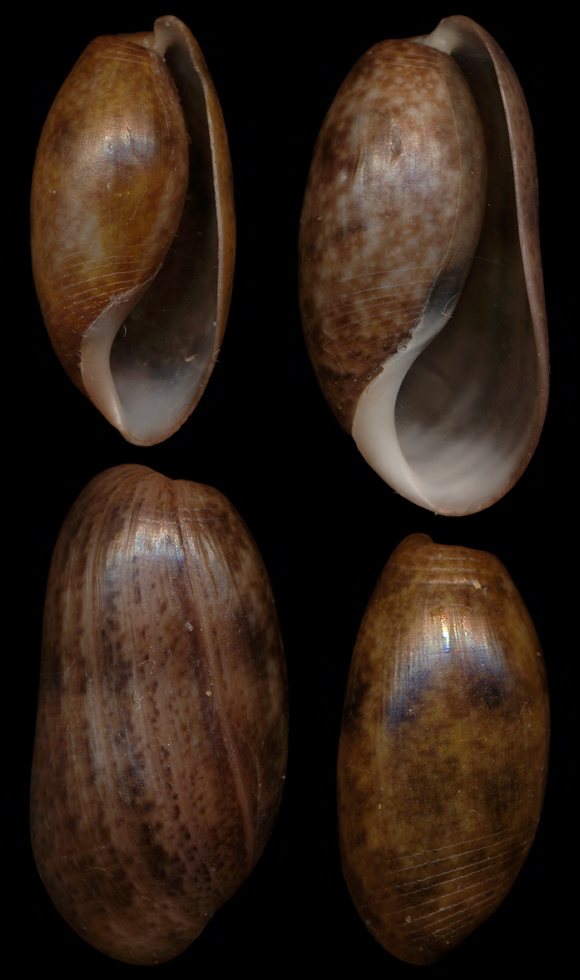
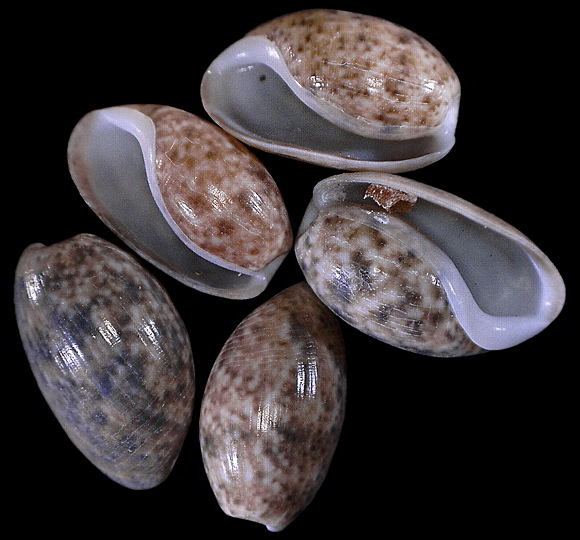
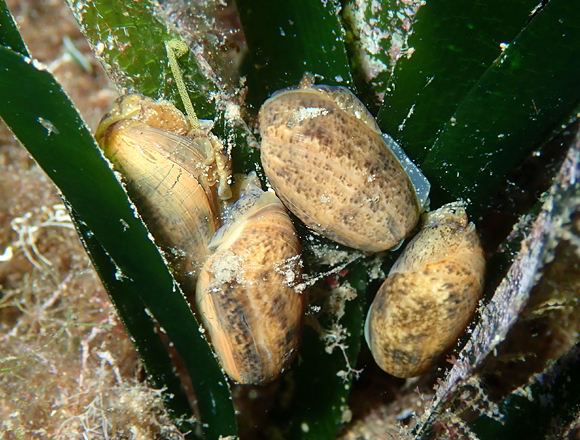
– (CC BY-NC) –
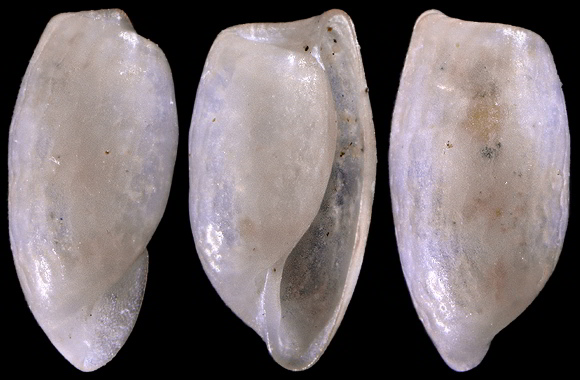
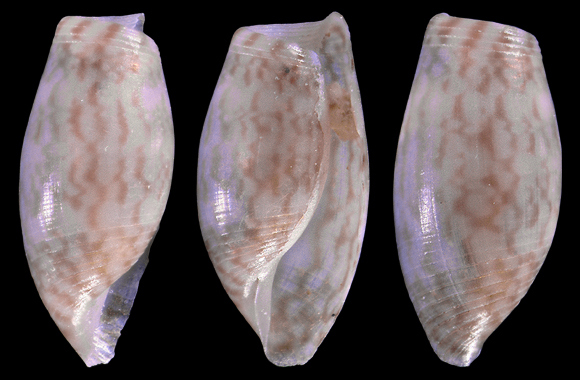
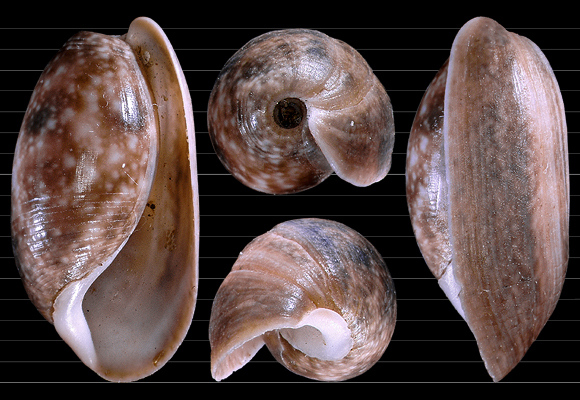
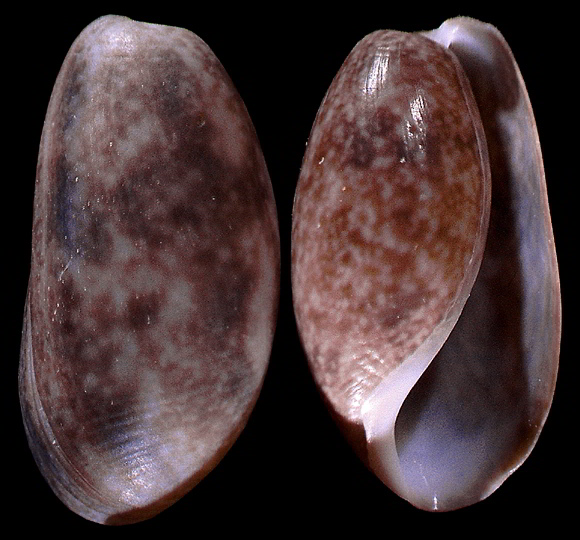
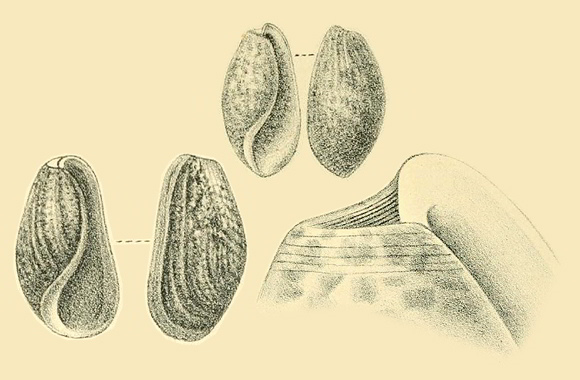
« The prominent features of this Mediterranean species are its narrow vertex, widely open apical umbilicus, and the striation of both ends of the shell. […] Specimens from the western Mediterranean are large, dilated below, with compressed outer lip and rounded basal lip ; the superior striae few or even obsolete, color as in the type, or boldly clouded with black longitudinally. […] I have satisfied myself by a comparison of specimens that Dall’s var. attenuata from the Pliocene of Shell Creek, Florida, is absolutely identical with typical Mediterranean shells, such as the Grecian specimen drawn in fig. 46 of pl. 37. It is likely that in Pliocene times the species striata had a wide range embracing the Mediterranean, West African and Antillean regions. It has persisted almost unchanged in the former of these, and in West Africa and America has diverged to form several ill-defined species, adansoni, occidentalis, amygdala, etc. However, a recent specimen collected by C. W. Johnson at Clearwater Harbor, W. Florida, is indistinguishable from the Mediterranean types, having the same compressed and widely umbilicated vertex, and subtruncate columella. »
